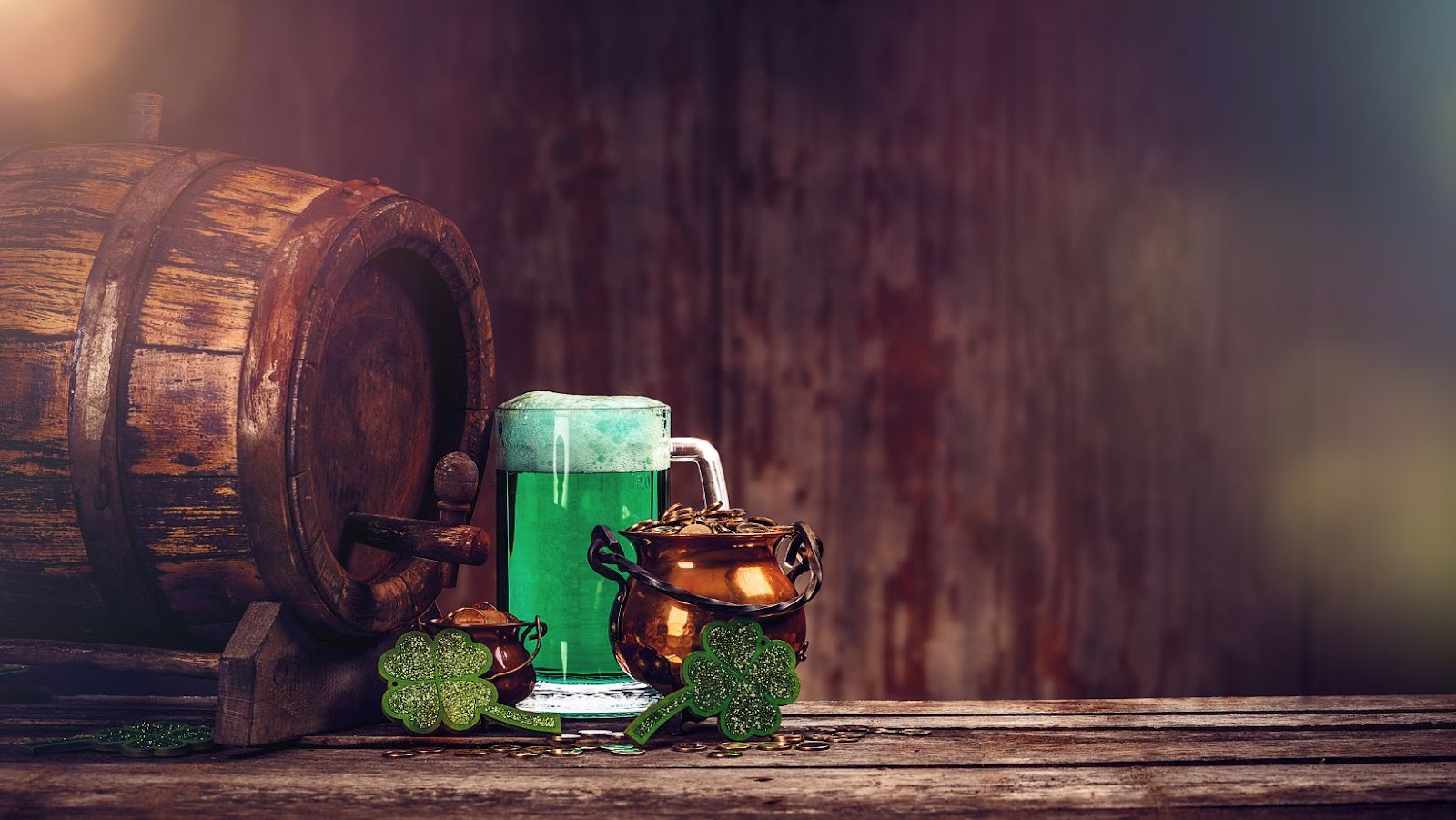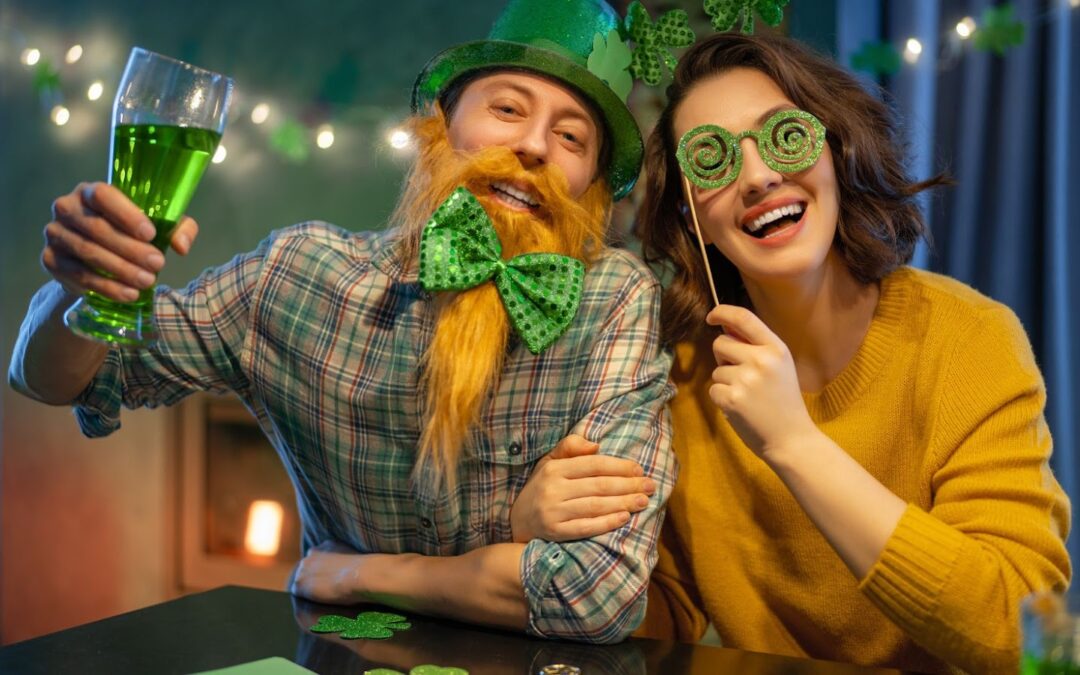St. Patrick’s Day is a holiday celebrated every year on March 17th, the traditional death date of St. Patrick, the patron saint of Ireland. Celebrations have been held in his honor since the 9th Century and have evolved over time to incorporate not just Irish traditions but customs from around the world. Today, people all over the world celebrate St. Patrick’s Day by wearing green, indulging in Irish food and drink, and participating in parades and other festivities. It’s a wonderful opportunity to highlight Irish culture and history both here in the United States and around the globe.
To better understand how St. Patrick’s Day came to be, we must look at its history and traditions—especially those specific to Ireland. The story of Saint Patrick himself has long been shrouded in mysterious legend; however, some facts about this beloved figure have surfaced over time which can help explain why he was chosen as the patron saint of Ireland ever since 1631 when it was declared an official holiday. From his humble beginnings as a Romano-British Christian missionary who brought Christianity to pagan Celtic lands to his place in folklore as a symbol of luck whose snakes would drive away sicknesses, there’s much more to learn about this revered figure—and every St. Patrick’s Day has something new for us discover too!
History of St. Patrick’s Day
St. Patrick’s Day has been celebrated in Ireland for centuries as a day of remembrance for Saint Patrick, the patron saint of Ireland. In the early days, it was a religious holiday; however, over the years, it has developed into an international celebration that includes three main traditions: parades, green clothing, and feasting.
Origin of St. Patrick’s Day
Every year on March 17th, countries around the world celebrate an Irish cultural feast of St. Patrick’s Day. The origin of this celebration stems from the life and legacy of St. Patrick, a Christian missionary who helped to spread Christianity throughout Ireland during the 5th century AD.
St Patrick was born in either Scotland or Wales to wealthy parents near the end of the 4th century. Little is known about his early years, but it is believed he was kidnapped by Irish raiders and taken as a slave to Ireland when he was 16 years old. During his enslavement in Ireland, St Patrick worked as a shepherd for six years and converted to Christianity. After escaping under mysterious conditions and returning to England, he studied theology at a monastery before having a dream that inspired him to return to Ireland to proselytize religion among its inhabitants.
After becoming ordained as an Archbishop in 432 AD, St Patrick returned to Ireland armed with religious teachings and passion for converting Pagans into Catholics and creating church communities everywhere he traveled during his thirty-year mission across Ireland. As part of these efforts, St Patrick used symbolism like transforming Dublin’s Three Crowns of Lóegaire into shamrocks – effectively linking Christianity with pre-Christian beliefs that held significance in Irish culture – while helping popularize Catholic converts’ reverence for the saint himself due in part from numerous miracles attributed him which earned him the title ‘The Enlightener’ amongst locals throughout Ireland for generations following his death on March 17th 461 AD–the day recognized today as St Patrick’s Day worldwide!
How it Became a Holiday
Originating in Ireland, St. Patrick’s Day is a cultural holiday celebrated around the world to honor the life and work of Saint Patrick, regarded as the patron saint of Ireland. Little is known about the saint’s life, though it is believed he was born in Roman Britain at some point in the 5th century AD before being brought to Ireland as a slave. He subsequently escaped and went on to convert many Irish people to Christianity before his death on March 17, 461.
In celebration of Saint Patrick’s life, Irish immigrants began celebrating St. Patrick’s Day in North America on March 17th of 1737 by celebrating a public feast in Boston—which has since become an internationally recognized holiday that celebrates Irish culture and pride. Since then, people have gathered annually for lively parades featuring traditional music and dance along with bagpipes and drums. The celebrations have also included pubs opening their doors for lively festivities from dawn until dusk! Over time, these traditions have become staples of modern-day St. Patrick’s Day celebrations around the world. The holiday has also evolved into an opportunity for those not directly connected to Irish heritage to join in on the fun by wearing green clothes or attending parades or other celebratory events during this special time each year!
What are Three Traditions on St. Patrick’s Day
Every year on the 17th of March, millions around the world celebrate St. Patrick’s Day. Although it’s a global holiday, Ireland is especially steeped in ancient traditions to commemorate the day.
From parades to shamrocks, here are some of the most popular and traditional ways to celebrate St. Patrick’s Day.
Wearing Green
Wearing green is one of the most well-known traditions of St. Patrick’s Day. The idea is that wearing something green will make you invisible to the fairies on this special day and save you from getting pinched! In some places, such as Chicago, dying an entire river green is also a symbol of celebrations for this day.
The tradition does come from Irish folklore. It is said that fairies do not like the color green, so if someone was dressed in it they would be able to avoid any trouble with them on St.Patrick’s day by concealing themselves in their surroundings. This same idea can be seen in other cultures – such as in Scotland where children wore tartan ribbons to ward off witches and their mischief on MayDay Eve.
Today, people don’t need to worry about fairies but wearing something green on St Patrick’s Day has become a sign of pride and celebration of Irish culture, heritage and legacy worldwide. Wearing all-over green clothing, or some part thereof like an accessory or piece of jewelryis a simple way to join in with this lighthearted tradition and express your festive spirit!
Eating Traditional Irish Food
Every St. Patrick’s Day celebration starts with enjoying a traditional Irish meal of corned beef and cabbage, potatoes, Irish bacon and other dishes. Corned beef is a type of beef that has been salted heavily and cured in brine; the term “corned” comes from the corn-sized grains of salt used to cure the meat over-time. This is traditionally served with potatoes, cabbage, carrots and gravy. To this day, it remains one of the most popular meals eaten during St. Patrick’s Day in many countries around the world — though sometimes the exact ingredients vary from place to place.
Irish bacon is simply made from cured or smoked pork loin with some fat still attached; it’s generally leaner than American bacon and less salty as well. Colcannon is a traditional dish made with mashed potatoes mixed with kale or cabbage and Irish butter. Onions, leeks or scallions can also be added for flavor — as can cooked onions, ham or even cooked carrots! Another favorite on St. Patrick’s Day is coddle — a pork sausage stew flavored with herbs such as parsley and bay leaves, vegetables (potatoes are especially popular) and stock cubes for additional flavor boost!
For dessert on St. Patrick’s Day, you cannot go wrong with the classic pudding called “Spotted Dog”. Many variations can be found today but it traditionally consists of suet pudding filled with raisins (or currants if you prefer) before being boiled for several hours; then served hot (usually with cream or custard). Other favorites include barmbrack (a sweet tea-bread flavored with sultanas), bread & butter pudding (similar to American bread pudding but less foamy), boxty cakes (fried potato cakes usually served as an entrée) or even plain doughnuts covered in sugar for something a bit sweeter!
The St. Patrick’s Day Parade
The St. Patrick’s Day Parade is one of the most beloved and recognizable traditions associated with St. Patrick’s Day. It originated in New York City in 1766 as an attempt to demonstrate Irish-American allegiance to the Patriot cause during the American Revolution. From there, it has grown in scope and popularity, becoming an international celebration of Irish heritage and culture.
The St. Patrick’s Day Parade occurs annually on or around March 17th and generally features an array of colorful floats, marching bands, entertainers, Irish dancers, green-clad parade watchers, and ironically plastic leprechaun hats being thrown from atop buildings. The parade is typically well attended by current and former presidents of both countries as well as other dignitaries from around the world reflecting its broad appeal on both sides of the Atlantic Ocean.
In addition to attracting throngs of revelers everywhere from Boston to Dublin to Sydney each year, the event also provides a platform for numerous causes which include: supporting Police Memorials; protecting traditional Irish culture; celebrating heroic citizens; raising public awareness about societal issues such as alcoholism and drug abuse prevention; promoting businesses owned by immigrants; recognizing achievements made by members of ethnic minority communities; demonstrating Christian values within modern society; advocating for equal rights for all racial and religious groups!

Regardless of your background or nationality—all are welcome to join the festivities!
Conclusion
St. Patrick’s Day is an Irish festival rich in mythology, history, and religious traditions. While the traditional St. Patrick’s Day Feast is no longer observed, many of the activities adapted over the centuries have become ingrained in modern day celebrations. Activities such as attending mass, decorating with shamrocks and other green decorations, wearing shamrock-adorned lapel pins, participating in proud parades full of music and dancing are still common today throughout Ireland and other countries around the world.
Popular foods associated with St. Patrick’s Day are also still present today including boiled bacon, colcannon (a puree), soda bread, shepherd’s pie (made of minced meats in a thick gravy) and Irish potato cakes or boxty. No matter where you are in the world on St. Patrick’s Day celebration festivities will surely be abound!

